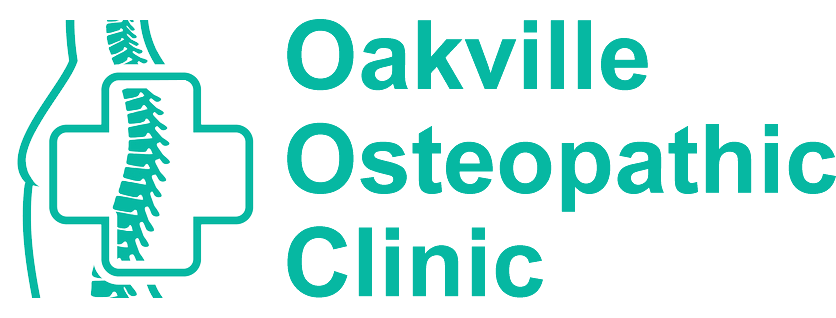Oakville Osteopathy, Pain Management, Oakville Osteopathic Clinic
An Osteopathy approach for Pain Management
Investing in your physical health is the greatest gift you can give yourself,
ensuring a future of mobility, pain-free, resilience, and joy.
At Oakville Osteopathic Clinic, we are dedicated to providing exceptional osteopathic care to the residents of Oakville and the surrounding areas. Our clinic focuses on a holistic approach to health, emphasizing the interconnectedness of the body’s systems. By employing a variety of manual techniques, we aim to treat a wide range of conditions, including chronic pain, sports injuries, and postural imbalances. Our team of licensed osteopaths in oakville are committed to personalized care, ensuring that each patient receives a tailored treatment plan that addresses their unique needs and promotes overall well-being.
About Oakville Osteopathic Clinic, we pride ourselves on creating a welcoming and supportive environment where patients can feel comfortable and confident in their care. Our state-of-the-art facility is equipped with the latest tools and technologies to provide effective and efficient treatments. We believe in the power of osteopathy to enhance the body’s natural ability to heal and recover, and we are passionate about helping our patients achieve optimal health. Whether you are seeking relief from a specific condition or looking to improve your general health, Oakville Osteopathic Clinic is here to support you on your journey to wellness.
Best Manual Osteopaths in Oakville
Conditions treated with Osteopathy and Craniosacral Therapy
- Fibromyalgia and SEID
- Multiple Sclerosis
- Ankylosing Spondylitis
- Recurrent Ear Infection
- Infants with Sucking Dysfunction
- Attention Deficit Syndrome (ADHD)
- Joints Pain During Pregnancy Vertigo (BPPV)
- Cervicogenic Dizziness
- Generalized Body Tension/Stress
- Some Types of Depressions
- TMJ/Jaw Disorder
- and more


Osteopathy has been in existence for many years and is gaining much recognition nowadays as a physical therapy to aid in effective pain management. It has proven to be superior, especially in cases where patients tried Physiotherapy or visited the Chiropractor without satisfactory pain relief. Osteopathy was first introduced in the year of 1870 by founder A.T. Stills. Osteopathy focuses more on body mobility, restoring its proper moving function and freeing it from any pain. Osteopathic practitioners can also help treat patients with muscle, spine, and joint pain such as Neck pain, back or spine problems, and hip and knee pains.
Have you ever wondered what the potential risks and side effects of osteopathic treatment might be? If so, then you’re not alone. Osteopathy is a holistic approach to healthcare that focuses on diagnosing, treating, and preventing illness by manipulating the body’s muscles and joints. While it can offer many benefits for those looking for an alternative form of medicine, there are also some associated risks and side effects. In this article, we will discuss these possible risks and side effects in more detail.




Osteopathy has been around for centuries, even if its popularity has waxed and waned over time. Today there are thousands of qualified practitioners who use gentle hands-on techniques to manipulate the body’s musculoskeletal structure into balance. This helps relieve tension, improve posture, increase flexibility, and reduce pain – all without the need for drugs or invasive surgery.
Are you in search of relief from chronic pain? You may have heard about osteopathy, but are not sure what it is or how it differs from other medical approaches. In this article, we will cover the basics of osteopathy and explore how it stands apart from traditional medicine. Keep reading to learn more!
Do you feel like your chronic pain isn’t being addressed by traditional methods? If so, then you should consider osteopathy as an alternative treatment option. Osteopathy is a type of manual therapy that uses gentle manipulation techniques to treat musculoskeletal issues such as joint stiffness, muscle spasms, and nerve entrapment. It has been used for centuries around the world to successfully reduce both acute and chronic pain caused by structural imbalances within the body.


Osteopathy is becoming an increasingly popular alternative or complementary form of medical treatment. But what does the evidence base say about its efficacy? In this article, we will explore how osteopathy compares to other forms of medicine in terms of research and clinical trials, asking: What is the evidence base for osteopathy, and how does it compare to other medical approaches?
Do you ever wonder what it takes to become an osteopath? How do they gain the skills and qualifications necessary to practice, and how are they regulated in different countries? We’re here to answer all of your questions about osteopathy!
Osteopathic medicine is a holistic approach that focuses on diagnosing, treating, and preventing health issues in the musculoskeletal system. To be successful, practitioners need extensive training to hone their knowledge and skills in order to provide quality care for their patients. But what does this entail exactly? And how does regulation vary across countries? In this article, we take a closer look at what goes into becoming an osteopath and how regulations differ around the world.
Osteopathy is a form of therapy that focuses on the body’s structure and its ability to heal itself. It has been used for many years, and there are now even specialized osteopathic treatments available for different conditions. But with all forms of treatment, it’s important to consider who should or shouldn’t receive them. Are there any groups of people who should avoid osteopathic treatment? This article seeks to answer this question by exploring whether pregnant women or elderly patients might need to be more cautious when considering an osteopathic treatment.
Have you ever wondered if osteopathy could be used as a preventative measure? Or is it only effective for treating existing conditions? Osteopathy has been around since the 19th century and its popularity continues to rise. But what exactly is it, and how can it help us with our health needs? In this article, I will explore whether or not osteopathy can be used as a preventative measure or if it’s just good at treating existing conditions.
Osteopathy focuses on holistic healthcare that looks after your body holistically rather than targeting specific symptoms. It involves gentle physical manipulations of the musculoskeletal system along with massage techniques. Osteopaths also provide advice about lifestyle changes like diet, exercise, and stress management which may help to improve overall well-being.
Do you suffer from chronic pain or have an injury that just won’t heal? If so, it might be time to consider seeing an osteopath. Osteopathy is a holistic form of medical treatment that focuses on joint manipulation and muscle stretching to promote healing in the body. But how does an osteopath diagnose a patient’s condition and what techniques are used in the treatment process? In this article, we’ll explore exactly what goes into diagnosing and treating osteopathy.
Have you ever wondered how osteopathy works in conjunction with other medical treatments? It can be confusing to understand the connection between different types of healthcare, especially when it comes to understanding how they interact. In this article, I’ll explain exactly how osteopathy integrates with medication and surgery – two of the most commonly used medical treatments today.
Have you ever wondered how long it takes to get results from osteopathic treatment? Or, perhaps you’re curious about how many sessions are typically needed. If so, then this article is for you. It will provide an overview of the length of time that can be expected before seeing any improvement and a general understanding of what kind of a number of treatments might be necessary. So if you’ve been considering trying out osteopathy but have yet to take the plunge, read on!
About Town of Oakville
Oakville, Ontario, is a picturesque town located along the shores of Lake Ontario, midway between Toronto and Hamilton. Known for its vibrant community and rich heritage, Oakville offers a unique blend of small-town charm and urban sophistication. The town is home to numerous parks, scenic trails, and beautiful waterfront areas, making it a haven for outdoor enthusiasts. Its historic downtown area, with its quaint boutiques, fine dining, and cultural attractions, is a hub of activity and a favorite spot for both residents and visitors. Oakville is also known for its top-tier schools and family-friendly neighborhoods, making it an attractive place to live for families and professionals alike.




In addition to its natural beauty and community-oriented atmosphere, Oakville boasts a thriving economy and a strategic location within the Greater Toronto Area. The town is home to a diverse range of businesses, from multinational corporations to small, locally-owned enterprises. With easy access to major highways like the QEW and close proximity to Toronto Pearson International Airport, Oakville is well-connected and offers convenient transportation options. The town’s strong commitment to sustainability and innovation further enhances its appeal, making it a dynamic and forward-thinking community. Whether you’re drawn to its scenic landscapes, vibrant cultural scene, or economic opportunities, Oakville stands out as one of Ontario’s most desirable places to live and work.
- Dundas Street (Highway 5)
- Trafalgar Road
- Lakeshore Road
- Speers Road
- Third Line
- Upper Middle Road
- Bronte Road
- Royal Windsor Drive
- Winston Churchill Boulevard
- Ford Drive
- Dorval Drive
- Rebecca Street
- Great Lakes Boulevard
- 16 Mile Drive
- QEW (Queen Elizabeth Way)
- North Service Road
- South Service Road
- Maple Grove Drive
- Burnhamthorpe Road
- Glenashton Drive
- West Oakville
- Falgarwood
- Kerr Village
- Clearview
- West Oak Trails
- Bronte
- Palermo
- Ennisclare Park
- Glen Abbey
- Uptown Core
- Oakville East L6K
- Oakville South L6L
- Oakville North L6H
- Oakville West L6M
- Oakville Northeast L6J

